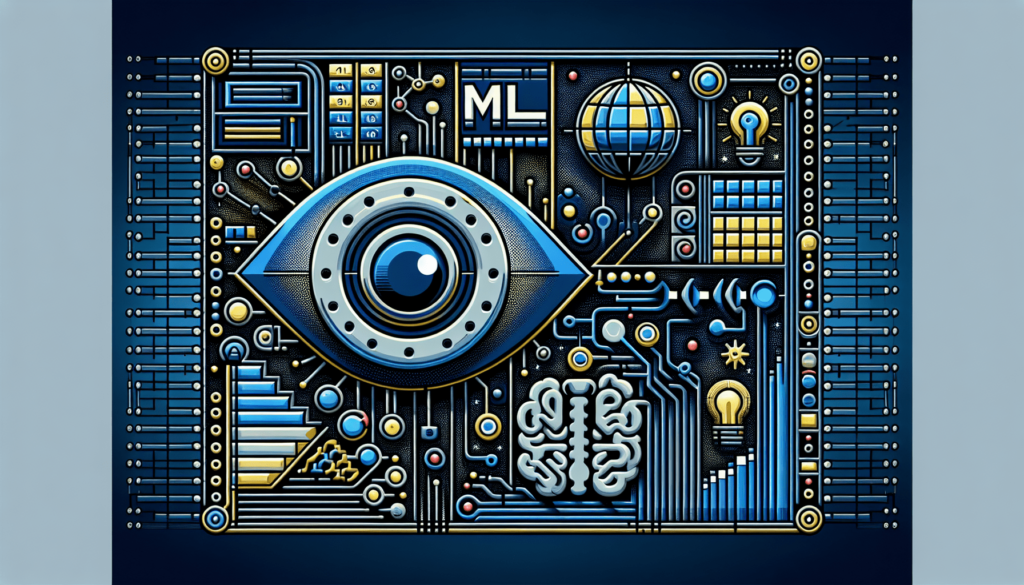ML, or machine learning, has become an integral part of many industries, revolutionizing the way we interact with technology. But as ML continues to gain momentum, a thought-provoking question arises: Can you have ML without AI? Is it possible for machine learning to exist independently, without the overarching presence of artificial intelligence? In this article, we will delve into this fascinating topic and explore the relationship between ML and AI, uncovering the essential connections that power the ever-evolving world of technology. So, fasten your seatbelts and get ready to embark on a captivating journey into the world of ML and AI!
Understanding ML and AI
Definition of ML
Machine Learning (ML) is a subfield of Artificial Intelligence (AI) that focuses on the development of algorithms and models that enable computers to learn and make predictions or decisions without being explicitly programmed. ML algorithms learn from the data provided to them, and with each iteration and exposure to new data, they can improve their performance.
Definition of AI
Artificial Intelligence (AI) is a broader concept that encompasses the development of systems or machines that can perform tasks that typically require human intelligence. It involves the simulation of human characteristics, such as learning, reasoning, problem-solving, perception, and decision-making, in machines.
Relationship between ML and AI
Defining the connection
ML and AI are closely interrelated, with ML being a subset of AI. ML algorithms are used to train models and enable machines to learn from data, while AI involves the broader concept of developing systems that exhibit human-like intelligence. ML is considered a fundamental building block for AI systems, as it empowers AI to make intelligent decisions based on the patterns it recognizes in the data.
AI as a broader concept
While ML focuses on training models and learning from data, AI encompasses various other areas such as natural language processing, computer vision, robotics, and expert systems. AI systems aim to replicate or enhance human intelligence in diverse domains and applications.

ML and AI as Separate Entities
Distinguishing features of ML
ML differs from AI in that it specifically focuses on the development of algorithms and models that improve their performance through learning from data. It emphasizes statistical modeling, pattern recognition, and predictive analysis to enable machines to make accurate predictions or decisions.
Situations where ML is used without AI
There are numerous situations where ML may be used without incorporating broader AI capabilities. For example, ML algorithms can be applied in various specialized domains, such as automated data analysis, image processing, predictive modeling in finance, recommendation systems, and fraud detection, all without fully integrating AI components.
ML Without AI Applications
Automated data analysis
ML algorithms can process vast amounts of data and identify patterns, trends, and correlations to aid in decision-making. This facilitates efficient automated data analysis, enabling organizations to derive valuable insights from their data resources.
Pattern recognition in image processing
ML techniques, such as deep learning, have revolutionized image processing by enabling machines to accurately recognize and classify objects, gestures, or facial expressions within images or videos. This has applications in areas like surveillance, autonomous vehicles, and healthcare diagnostics.
Predictive modeling in finance
ML algorithms can be used in finance to predict stock market trends, risk assessment, credit scoring, and fraud detection. By analyzing historical data, ML models can provide valuable insights into future market movements, minimizing risks and optimizing investment strategies.
Recommendation systems
ML algorithms power recommendation systems used by e-commerce platforms, streaming services, and social media platforms to personalize suggestions to users. By analyzing a user’s preferences and historical data, ML models can suggest relevant products, movies, or content to enhance user experience.
Fraud detection
ML techniques can be employed to detect fraudulent activities by analyzing patterns and anomalies in data. By learning from historical fraud cases, ML algorithms can identify suspicious transactions, enabling timely intervention and prevention of financial losses.

Advantages of Utilizing ML without AI
Focused task-oriented approach
By utilizing ML without full AI integration, systems can have a more focused approach in addressing specific tasks or domains. ML algorithms can be tailored and fine-tuned for specific applications, resulting in optimized performance, efficiency, and accuracy.
Simpler implementation
Since ML algorithms focus on data analysis and pattern recognition, the implementation of ML systems can be less complex compared to fully integrated AI systems. This enables quicker deployment and reduces the resources and expertise required for development and maintenance.
Increased efficiency
ML without AI can enhance efficiency by automating and improving decision-making processes in specific areas. By eliminating manual analysis and incorporating ML algorithms, organizations can streamline operations, reduce errors, and achieve faster and more accurate results.
Limitations of Using ML without AI
Limited decision-making capabilities
While ML algorithms excel in making predictions based on patterns, they lack the broader decision-making capabilities associated with AI systems. ML may be limited to making predictions or classifications based solely on the patterns detected in the training data, without considering external factors or context.
Lack of adaptability
ML without AI may struggle to adapt to unfamiliar or evolving situations that require reasoning or learning beyond the scope of the initially trained models. ML systems typically don’t possess the ability to adapt to new data dynamically or incorporate new knowledge without manual intervention.
Potential to reinforce biases
ML models learn from historical data, which may contain biases or limitations. Without broader AI components to consider ethical implications and ensure fairness, ML systems can reinforce existing biases or create biased outcomes, leading to potential ethical and social concerns.
Complementary Nature of ML and AI
ML as a component of AI systems
While ML is a subset of AI, it plays a crucial role in the functioning of AI systems. ML algorithms contribute to the learning and decision-making capabilities of AI, allowing the integration of statistical analysis and predictive modeling in broader AI applications.
Benefits of combining ML with AI
By combining ML with AI, systems can leverage the strengths of both fields. ML enhances the learning, predictive, and pattern recognition capabilities of AI systems, enabling them to make more informed and adaptive decisions based on data analysis.
Enhancing human-like intelligence
ML combined with other AI components facilitates the development of systems that exhibit enhanced human-like intelligence. By incorporating natural language processing, computer vision, robotics, and expert systems, AI systems can simulate human capabilities and interact more effectively with users.
Examples of AI without ML
Expert systems
Expert systems are AI systems that utilize a knowledge base and inference engines to simulate human expertise in a specific domain. They rely on predefined rules and logical reasoning rather than learning from data, making them AI systems without full ML integration.
Natural language processing
Natural language processing (NLP) focuses on enabling AI systems to understand, interpret, and generate human language. While ML techniques can be employed within NLP, other AI components such as rule-based systems and semantic understanding contribute to NLP capabilities.
Robotics
Robotics involves the development of physical systems that possess AI capabilities. While ML algorithms can be used to enhance robot learning and perception, other AI components, such as planning, control, and sensor integration, play significant roles in robotics.
Ethical Considerations of Separating ML and AI
Potential consequences of excluding ML from AI systems
Separating ML from AI systems may restrict the learning and adaptive capabilities of AI, limiting their potential to make informed decisions and address complex problems. Without ML, AI systems might rely solely on predefined rules, lacking the ability to adapt to new or unforeseen circumstances.
Responsible development and deployment
To overcome potential ethical challenges, responsible development and deployment of ML and AI technologies are required. Ethical considerations should be placed at the forefront of development processes, including transparency, fairness, and accountability, to ensure the responsible use of AI and ML in various applications.
Future Perspectives on ML and AI
Integration of ML and AI technologies
The future of ML and AI lies in the seamless integration of these technologies. Developing AI systems with more advanced ML models, combining various AI components, and leveraging emerging technologies will lead to the creation of intelligent systems capable of addressing complex challenges.
Emerging advancements
As ML and AI continue to advance, new methods, algorithms, and techniques will emerge. These advancements will unlock possibilities for solving complex problems, transforming industries, and enhancing human-machine interactions. Areas such as explainable AI, reinforcement learning, generative models, and deep learning will continue to shape the future of ML and AI.
In conclusion, ML and AI are closely related but distinct entities. ML focuses on data-driven learning and predictive analysis, whereas AI encompasses a broader set of capabilities to replicate or enhance human intelligence. While ML can be utilized without incorporating the full capabilities of AI, the two fields are highly complementary. The integration of ML into AI systems enhances learning, decision-making, and adaptive capabilities, leading to the development of more intelligent and efficient systems. Responsible development and the synergy between ML and AI will shape the future of technology, enabling advancements with wide-ranging implications across various industries.
